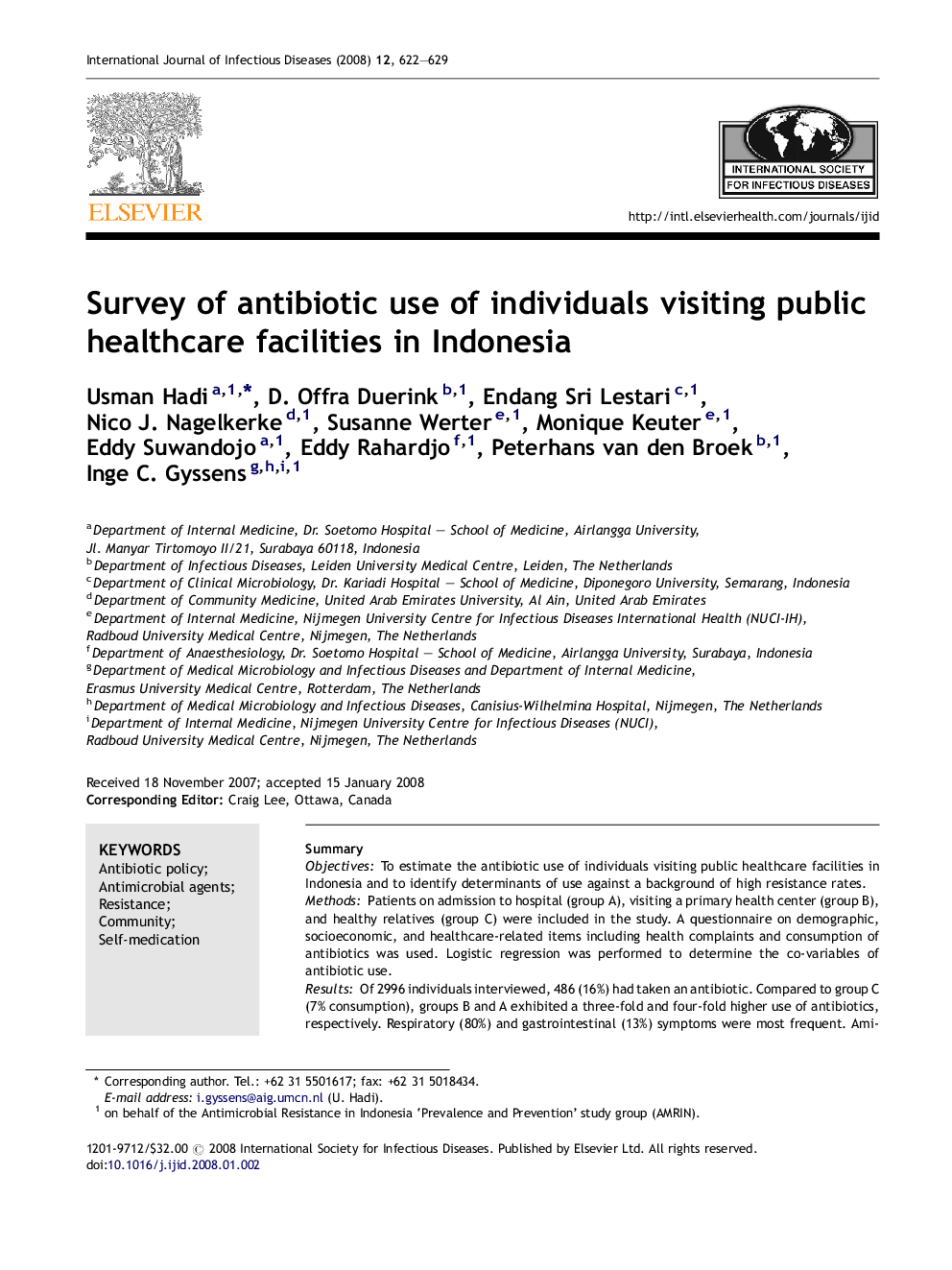| Article ID | Journal | Published Year | Pages | File Type |
|---|---|---|---|---|
| 3364823 | International Journal of Infectious Diseases | 2008 | 8 Pages |
SummaryObjectivesTo estimate the antibiotic use of individuals visiting public healthcare facilities in Indonesia and to identify determinants of use against a background of high resistance rates.MethodsPatients on admission to hospital (group A), visiting a primary health center (group B), and healthy relatives (group C) were included in the study. A questionnaire on demographic, socioeconomic, and healthcare-related items including health complaints and consumption of antibiotics was used. Logistic regression was performed to determine the co-variables of antibiotic use.ResultsOf 2996 individuals interviewed, 486 (16%) had taken an antibiotic. Compared to group C (7% consumption), groups B and A exhibited a three-fold and four-fold higher use of antibiotics, respectively. Respiratory (80%) and gastrointestinal (13%) symptoms were most frequent. Aminopenicillins and tetracyclines accounted for 80% of the prescribed antibiotics. Similar antibiotics were self-medicated (17% of users). Age less than 18 years and health insurance were independent determinants of antibiotic use. Urban provenance, being adult, male, and having no health insurance were independent determinants of self-medication.ConclusionsIn addition to health complaints, other factors determined antibiotic consumption. In view of the likely viral origin of respiratory complaints and the resistance of intestinal pathogens, most antibiotic use was probably unnecessary or ineffective. Future interventions should be directed towards healthcare providers.
